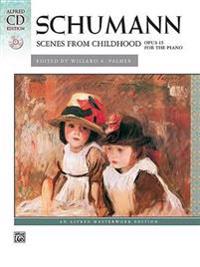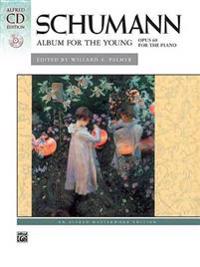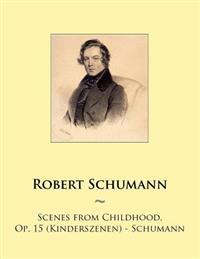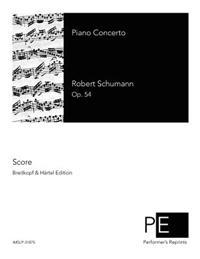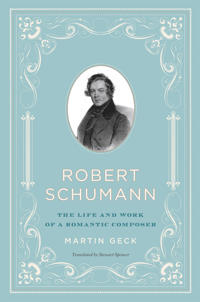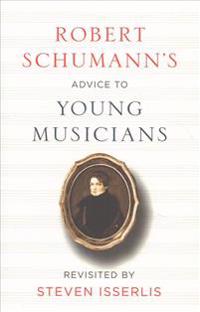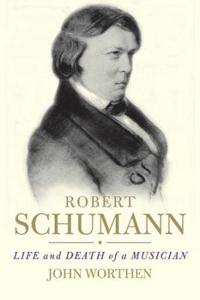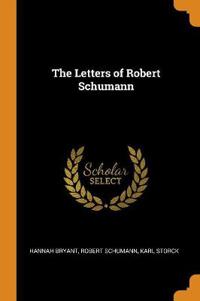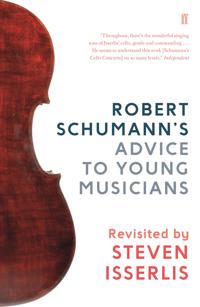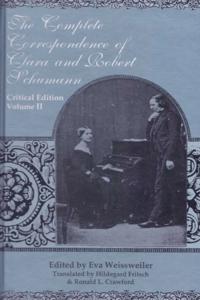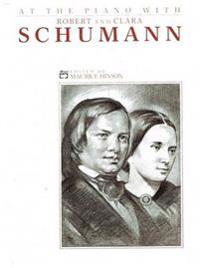Schumann -- Scenes from Childhood: Book & CD (Okänt format)
avValery Lloyd-Watts, Robert Schumann, Willard Palmer
ISBN: 9780739036914 - UTGIVEN: 2004-12Schumann -- Album for the Young, Op. 68: Book & 2 CDs (Okänt format)
avKim O'Reilly, Robert Schumann, Willard Palmer
ISBN: 9780739036921 - UTGIVEN: 2004-12Numerous selections from Schumann's Album for the Young have long been favorites of intermediate students, and few collections fail to include the "Soldier's March," the "Happy Farmer" or the "Wild Horseman." This historically informed edition of the entire collection clearly differentiates the mark[...]
Scenes from Childhood, Op. 15 (Kinderszenen) - Schumann (Häftad)
avRobert Schumann, Samwise Publishing
ISBN: 9781502870452 - UTGIVEN: 2014-10Robert Schumann (Inbunden)
ISBN: 9780195091809 - UTGIVEN: 1997-06Forced by a hand injury to abandon a career as a pianist, Robert Schumann went on to become one of the world's great composers. Among many works, his Spring Symphony (1841), Piano Concerto in A Minor (1841/1845), and the Third, or Rhenish, Symphony (1850) exemplify his infusion of classical forms wi[...]
Fantasy Pieces: Metrical Dissonance in the Music of Robert Schumann (Inbunden)
avHarald Krebs
ISBN: 9780195116236 - UTGIVEN: 1999-02-01Fantasy Pieces: Metrical Dissonance in the Music of Robert Schumann (Pocket)
avHarald Krebs
ISBN: 9780195169461 - UTGIVEN: 2003-09-01Robert Schumann (Inbunden)
avMartin Geck, Stewart Spencer, Martin Geck
ISBN: 9780226284699 - UTGIVEN: 201211Robert Schumann (1810-56) is one of the most important and representative composers of the Romantic era. Born in Zwickau, Germany, Schumann began piano instruction at age seven and immediately developed a passion for music. When a permanent injury to his hand prevented him from pursuing a career as [...]
Robert Schumann's Advice to Young Musicians: Revisited by Steven Isserlis
ISBN: 9780226482743 - UTGIVEN: 2017-10If everybody were to play first violin, we could not have an orchestra. Therefore respect each musician in his own place.
There is no end to learning.
Originally published in1850, Advice to Young Musicians: Musical Rules for Home and in Life offered composer Robert Schumann's (1810-5[...]Robert Schumann (Häftad)
avJohn Worthen
ISBN: 9780300163988 - UTGIVEN: 201003This candid, intimate, and compellingly written new biography offers a completely fresh account of Robert Schumann's life. It confronts the traditional perception of the doom-laden Romantic, forced by depression into a life of helpless, poignant sadness. John Worthen's scrupulous attention to the or[...]
Robert Schumann (Häftad)
ISBN: 9780486490717 - UTGIVEN: 2012-12Volume I of an original two-book set collects Schumann's best known character pieces and piano cycles in a pristine urtext edition. Printed to precisely reproduce the artist's original intentions, it features 13 of the Romantic composer's finest works: Fantasy Pieces, Symphonic Etudes, Scenes from C[...]
Robert Schumann (häftad)
ISBN: 9780486490724 - UTGIVEN: 2012-12Printed to precisely reproduce Schumann's original intentions, Volume II of an original two-book urtext set collects the composer's best- known character pieces and piano cycles, edited and engraved by Ephraim Hammett Jones. Includes Davidsbundlertanze; Piano Sonatas Nos. 1, 2, and 3; Noveletten; Fa[...]
Robert Schumann's Advice to Young Musicians
ISBN: 9780571330911 - UTGIVEN: 2016-09Robert Schumann was far ahead of his time, not least in his attitude to children and young people; his 'Advice for Young Musicians', originally created to accompany his famous 'Album for the Young', remains as relevant today as when it was written. Celebrated cellist Steven Isserlis adds his own ext[...]
Robert Schumann
ISBN: 9780674026292 - UTGIVEN: 2008-01Arguably no other nineteenth-century German composer was as literate or as finely attuned to setting verse as Robert Schumann. Jon W. Finson challenges long-standing assumptions about Schumann's Lieder, engaging traditionally held interpretations. He argues against the belief that the "Year of Song"[...]
Complete Correspondence of Clara and Robert Schumann
ISBN: 9781453909980 - UTGIVEN: 2015-10The second volume of the Schumann correspondence contains letters written by Robert Schumann (1810-1856) and Clara Wieck Schumann (1819-1896) in 1839, documenting the major events of that year: Clara's concert tour and stay in Paris, Friedrich Wieck's continued vehement opposition to Robert's courts[...]
Robert Schumann
ISBN: 9781904341543 - UTGIVEN: 2005-10Robert Schumann (1810-1856) was the quiet one, the tormented genius. A serious illness prevented him from becoming a pianist, but he fell in love with Clara, the daughter of his teacher Friedrich Wick and married her in 1840. Felix Mendelssohn Bartholdy appointed him lecturer in composition at the c[...]
ROBERT SCHUMANN IN ENDENICH 18541856 (Inbunden)
ISBN: 9783795705275Um Schumanns letzte Lebensjahre, die er in der Nervenheilanstalt in Endenich bei Bonn verbrachte, ranken sich Gerüchte, Legenden und Mutmaßungen. Opfer dieser Spekulationen ist nicht zuletzt Clara Schumann. Ihr Verhalten während dieser Zeit wird in populären Lebensbeschreibungen häufig negativ [...]
KINDERSZENEN SCENES FROM CHILDHOOD OP 15 (Häftad)
avROBERT SCHUMANN
ISBN: 9783850555784 - UTGIVEN: 1996-08for piano.
KINDERSZENEN SCENES FROM CHILDHOOD (Häftad)
avROBERT SCHUMANN
ISBN: 9783850555791 - UTGIVEN: 1997-02for piano. Von fremden Lndern und Menschen - Kuriose Geschichte - Haschemann - Bittendes Kind - Glckes genug - Wichtige Begebenheit - Trumerei - Am Kamin - Ritter vom Steckenpferd - Fast zu ernst - Frtemachen - Kind im Einschlummern - Der Dichter spricht - Kriitsche Anmerkungen - Critical Notes[...]

